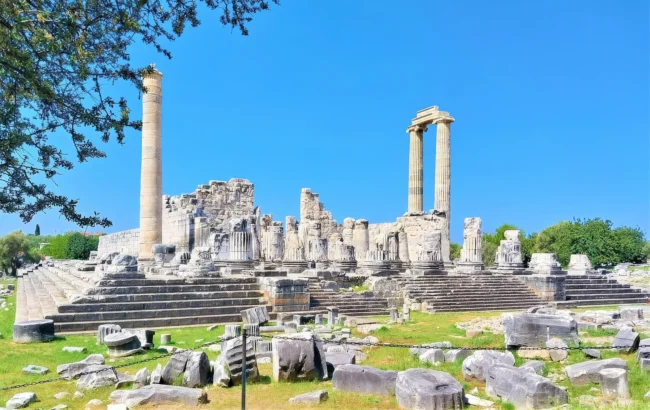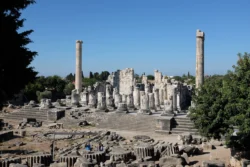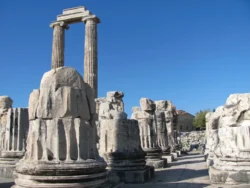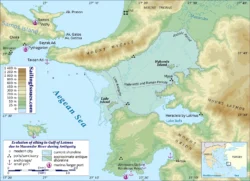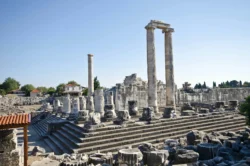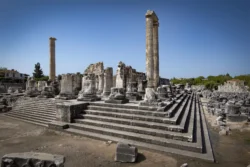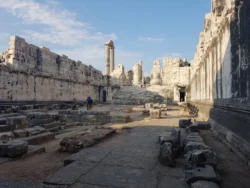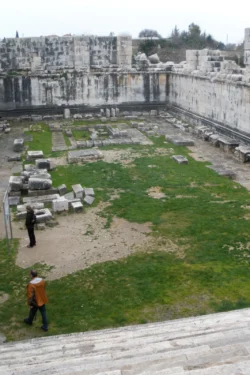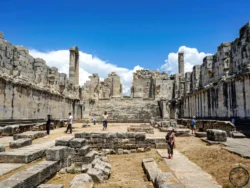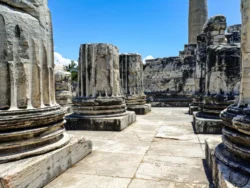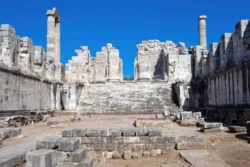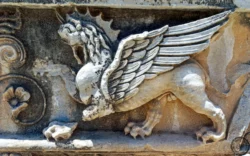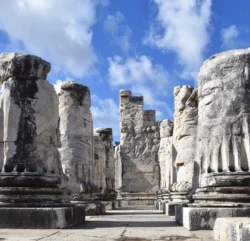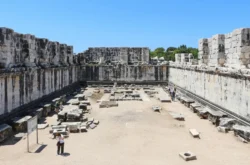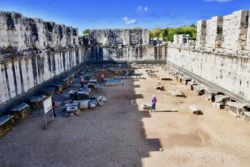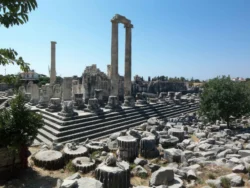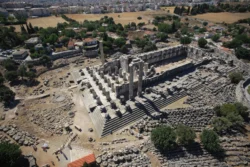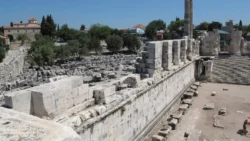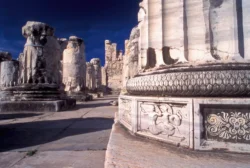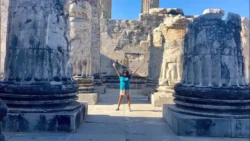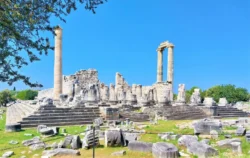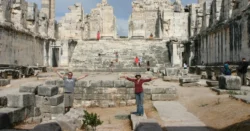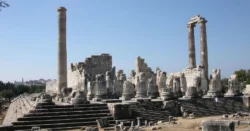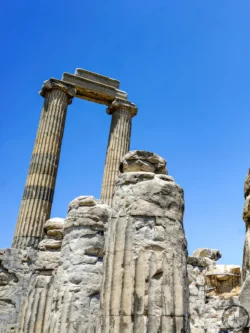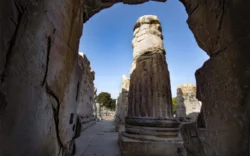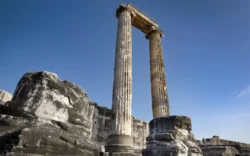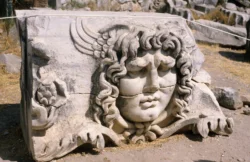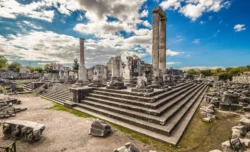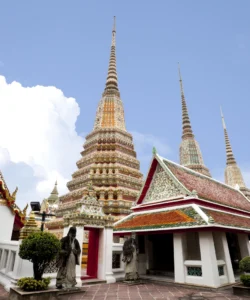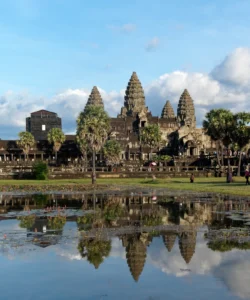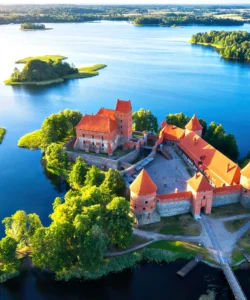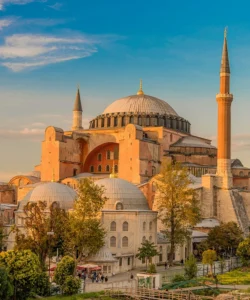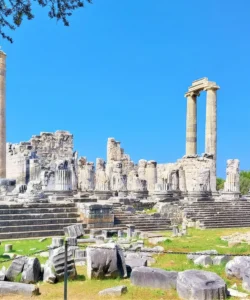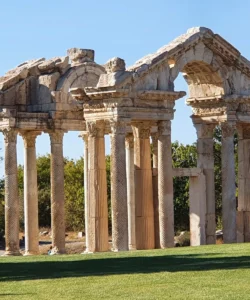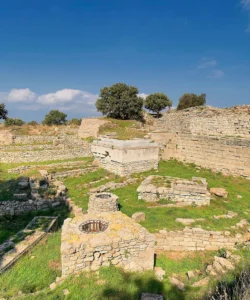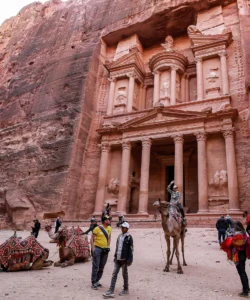Didyma is an ancient Greek sanctuary in southwestern Turkey, renowned for its colossal and remarkably preserved Temple of Apollo. As the site of one of the most famous oracles of the ancient world, it was a major religious center and pilgrimage destination, second only to Delphi in influence.
Listen to an introduction about Didyma
Name
Didyma (Ancient Greek: Δίδυμα), meaning “twins,” referring to the twin deities Apollo and Artemis.
Address
The archaeological site of Didyma is located in the modern town of Didim, in the Aydın Province on the Aegean coast of western Turkey.
How to Get There
Didyma is a popular day trip destination, but it is not directly accessible by major public transport from Istanbul.
- By Air: The most convenient way to reach the region from Istanbul is to fly to İzmir Adnan Menderes Airport (ADB) or Bodrum-Milas Airport (BJV). From either airport, you would need to rent a car, hire a taxi, or take a local bus for the final journey.
- By Car: The drive from İzmir to Didyma takes about 1.5 to 2 hours. This is the most flexible option for visitors who want to explore the surrounding ancient sites.
- By Bus: There are bus services from major cities like Istanbul and İzmir to the town of Didim. From the bus station, a short taxi ride or walk will take you to the archaeological site.
Landscape and Architecture
The landscape of Didyma is dominated by the colossal Temple of Apollo, a monumental structure that was never fully completed but still stands as a testament to ancient Greek engineering.
- The Temple of Apollo: This is the primary feature of the site. It was one of the largest temples in the ancient world, with over 120 towering Ionic columns. It was a dipteros temple, surrounded by a double colonnade.
- The Oracle: At the heart of the temple was an open-air courtyard and a small temple-within-a-temple (naiskos) where the oracle’s sacred spring and laurel tree were located. The oracle’s priestess would give her prophecies from this inner sanctum.
- The Sacred Way: A paved, monumental road known as the “Sacred Way” once connected the sanctuary of Didyma to the city of Miletus. This road was used for sacred processions and was lined with statues and monuments.
What Makes It Famous
Didyma’s fame is rooted in its role as a sacred oracle and its awe-inspiring architecture.
- Oracle of Apollo: Didyma was the second-most important oracle in the ancient Greek world, after Delphi. Pilgrims from across the Mediterranean would travel to the sanctuary to consult the priestess and receive prophecies from the god Apollo.
- Colossal Scale: The sheer size of the Temple of Apollo is what makes it so impressive. Even in its ruined state, the massive columns, some of which are still standing, evoke a sense of grandeur and a glimpse into the ambition of its builders.
- Engineering and Artistry: The temple is a marvel of Hellenistic architecture and its decorative elements, such as the famous Medusa head carving, showcase the high level of artistry that flourished in the region.
Differences from Some Other Wonders (e.g., The Oracle of Delphi)
While both Didyma and the Oracle of Delphi were famous oracles of Apollo, they are distinct in their setting and architectural scale.
- Geographical Setting: Delphi is built into the side of a mountain, creating a dramatic, terraced sanctuary. Didyma is located on a relatively flat plain near the coast, with its grandeur coming from the sheer scale of its monumental temple.
- Architectural Scale: The Temple of Apollo at Didyma was built on a colossal scale, far larger than any single temple at Delphi. The Delphi complex is a collection of smaller temples, treasuries, and a theatre, all integrated into the natural landscape.
- Narrative: The story of Didyma is intertwined with its oracle, a sacred spring, and a monumental procession route from a nearby city. Delphi’s story is more connected to a central priestess, a sacred chasm, and its role as the center of the world (omphalos).
Didyma Photos:
